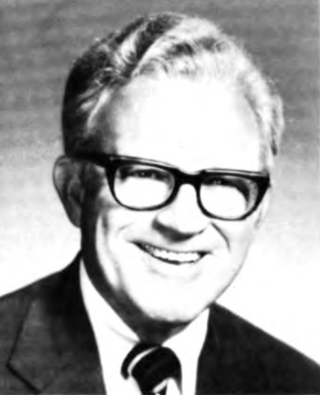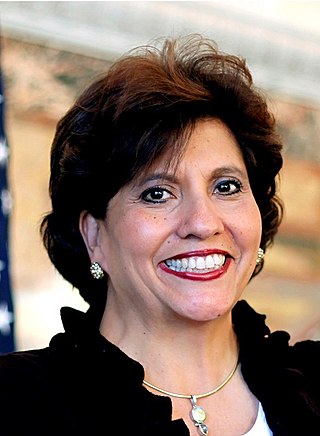Maricopa County Sheriff's Office
The MCSO Vision Statement as posted on their own web site states: “The Maricopa County Sheriff's Office is a fully integrated law enforcement agency committed to being the leader in establishing the standards for providing professional quality law enforcement, detention, and support services to the citizens of Maricopa County and to other criminal justice agencies.” [4]
A December 2008 report by the Goldwater Institute compared MCSO with their peer agencies in the same cities. In violent crime, the Federal Bureau of Investigation (FBI) showed the MCSO has a 69% increase compared to their peers of 18% and −11%. For homicides, the MCSO had a 160% increase compared to other jurisdictions which were near zero. [5]
In 2009, the East Valley Tribune won a Pulitzer Prize for its five-part series that exposed how police protection suffered as the MCSO increased efforts to combat illegal immigration. The Tribune reporters Ryan Gabrielson and Paul Giblin produced the five-part series “Reasonable Doubt,” which exposed slow emergency response times and lax criminal enforcement as the department focused more of the agency's resources on seeking out and arresting illegal immigrants. [6]
Racial profiling
The MCSO has been accused of racial profiling in lawsuits filed by the American Civil Liberties Union (ACLU). In one suit, the ACLU alleged that MCSO deputies arrested and detained U.S. citizens and legal residents without justification, stopping them as they were driving down a public roadway, and transporting them to the site of an immigration raid. [7] A separate class-action suit, filed by the ACLU and the Mexican American Legal Defense and Educational Fund (MALDEF) alleged that MCSO deputies unlawfully stopped and mistreated individuals because they were Latino. The lawsuit charged that this practice is discriminatory and unlawfully violates the Fourth (1789) and Fourteenth Amendments (1868) to the United States Constitution, Title VI of the Civil Rights Act of 1964, and the Constitution of Arizona. [8]
In 2013, judge G. Murray Snow of the United States District Court for the District of Arizona ruled in a civil lawsuit, in which a number of Hispanic individuals represented by the ACLU alleged racial profiling by the Sheriff's Office. Among other remedies, Judge Snow appointed a court monitor to oversee compliance with his orders that included video cameras in every police car, and training of staff. [9] Further controversy erupted when department training videos surfaced in which Judge Snow's orders were trivialized. [10]
Department of Justice investigations
In June 2008, the United States Department of Justice (DOJ) began an investigation of the Maricopa County Sheriff's Office. [11] In March 2009, the US Department of Justice notified Arpaio that they were investigating the department for civil rights violations, in unfairly targeting Hispanics and Spanish-speaking people. [12] The DOJ found "reasonable cause to believe that MCSO engages in a pattern or practice of violating the Constitution and laws of the United States" and that "MCSO is broken". [11]
In October 2009, it was reported that the Federal Bureau of Investigation (FBI) was investigating Arpaio for using his position to settle political vendettas. [13]
In January 2010, it was reported that the Department of Justice had impaneled a grand jury to investigate allegations of abuse of power by Arpaio. [14]
In March 2010, it was reported that an investigation into Arpaio is "serious and ongoing", according to United States Attorney General Eric Holder; [15] however, by August 2012, the Department of Justice decided to close its criminal investigation and to not bring any charges. [16] [17]
Tucson Four
Very soon after the Waddell Buddhist temple shooting in 1991, the Office arrested four men acting on a tip from a patient at a mental-health facility. After thirteen hours of interrogation, all four signed confessions. Later two other men were arrested for nine counts of murder. [18]
The Office settled the matter with cash payments of over two million dollars.
Jail conditions
In October 2008, federal judge Neil V. Wake of the United States District Court for the District of Arizona ruled that conditions in Maricopa County jails violated the constitutional rights of inmates. [19]
In April 2010, Wake ruled that conditions in the Maricopa County jails continued to violate the constitutional rights of inmates. [20]
Contempt citation of detention officer

In October 2009, a courtroom video was posted on YouTube, showing an MCSO Detention Officer removing documents from a defense attorney's files. [21] Detention Officer Adam Stoddard was subsequently found in contempt-of-court for violating attorney–client privilege, was ordered by judge Gary Donahoe to hold a press conference and to publicly apologize for his actions. [22] On the deadline set by the court, Detention Officer Stoddard, under orders from Sheriff Joe Arpaio, [23] [24] declined to apologize and was jailed. Arpaio argued that only he could order his Detention Officer's actions, and that the court had no authority to enforce any action against his officer, a position that the Appeals Court rejected in Stoddard's appeal. The Appeals Court did order that Judge Donahoe's order to make an apology be stricken and replaced with a fine. [25] [26] The next day, 20 MCSO detention officers failed to report for work at the downtown Phoenix Superior Court. A bomb threat was called in, causing the building to be evacuated. The same afternoon, more than 150 deputies and detention officers gathered outside the courthouse and reiterated their support for the jailed detention officer. [27] The MCSO appealed the contempt order, and pending the outcome of the appeal, the deputy was released from jail. Ultimately, the contempt-of-court ruling was upheld, however the court of appeals threw out the penalty (that the officer apologize), and sent the case back to the superior court for the imposition of a fine. [28]
Controversial use of SWAT forces
On July 23, 2004, a SWAT team (Special Weapons And Tactics) served a search warrant looking for "a stockpile of illegal automatic weapons and armor-piercing pistol ammunition" that they believed was hidden at an upscale home. In the course of serving the warrant, multiple tear gas cartridges were launched into the home, the result of which was the home catching fire. During the fire, SWAT forced the homeowner's 10-month-old pit bull puppy back into the home with a fire extinguisher, resulting in the dog's death. It was reported that the officers laughed over the incident. The armored personnel carrier (APC) used during the assault also ran over and damaged a neighbor's vehicle when its brakes failed. Police recovered two weapons: one antique shotgun; and one 9mm pistol. After failing to find illicit weapons the police served an arrest warrant for the house's owner, who was also wanted on a misdemeanor warrant for failing to appear in Tempe Municipal Court on several traffic citations. [29]











